December 1, 2023
If the UN’s Sustainable Development Goals (SDGs) are a global to-do list, climate action and the provision of affordable clean energy are the highest priorities. Increased clean energy capacity and energy efficiency bring us nearer to achieving all of the SDGs, including those targeting health and well-being, education, and sustainable cities and communities.
Signify, a world leader in lighting, believes that it can reduce energy consumption and thereby emissions, and also help cities and organizations to tackle many of the other challenges set by the SDGs.
Sustainability in the built environment is as much about the social impact of creating liveable spaces as it is about reducing carbon emissions. And the way in which inclusive spaces are lit—both indoors and outdoors—is central to the security and well-being of the people who use these spaces.
Modern, high-quality lighting systems enhance quality of life and improve city services, public spaces, social engagement and safety. Research by the World Council on City Data suggests that upgrading to connected street lighting can reduce night-time traffic accidents by 30% and street crimes such as assaults as well as burglaries by 21%.
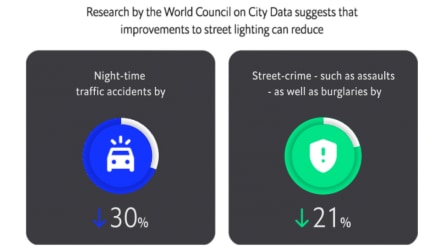
Cities will benefit significantly from investment in the right lighting solutions, creating positive social impact by increasing the safety and well-being of their citizens, as well as meeting their sustainability goals.
Signify's Green Switch program has been designed to help cities in their sustainability and climate journeys, to invest in and install the most sophisticated public lighting. It can specify the right lighting products, systems and services, and guide authorities through the process of obtaining financing.
Signify’s Interact connected lighting system offers cities new ways to control, manage and measure the impact and efficiency of lighting in public spaces. These systems not only deliver savings on maintenance and energy consumption, but also go beyond lighting to open up innovative ways to enhance safety and security.
The German town of Herzogenaurach (famous as the home of the giant Adidas and Puma sportswear brands) partnered with Signify to upgrade its 3,200 street lights. All of its LED lights are now networked using Signify’s Interact connected lighting system. Individual lighting levels and schedules can now be set for every light in the town and instantly adjusted. It also uses motion detection sensors to adjust lighting levels, based on real-time requirements. The street lights work as an interconnected system, increasing brightness in the direction of cyclists on a cycle path, for instance. Nighttime road safety is improved, while energy consumption is reduced, saving lives, money and emissions.
These sophisticated lighting strategies are intuitively managed and controlled through the award-winning Interact dashboard. The system picked up an iF Design Award in 2021, praised for translating “highly complex and technical design challenges into clear, coherent, and human-centered user interface designs.”
Within two years of installing Interact, Herzogenaurach was seeing huge reductions in energy use and emissions. “The numbers speak for themselves,” says German Hacker, the town’s mayor. “CO₂ emissions from our public lighting points have been reduced by 330 tonnes per year, while electricity costs have been reduced by up to 75%. If you offset the investment costs of €1.6 m against this savings potential, it will soon have paid for itself.”
The positive impacts of the upgrade were not just economic, but were felt in the way in which people experienced and used the civic environment. “High-quality light creates quality in public spaces,” Dr Hacker explains, “which is why we rely on Signify’s light management.”
Signify has worked with towns and cities to install 3.6 million connected Interact city light points around the world, helping to create high-quality public spaces. A connected public system can improve quality of life in other ways. We now regard fast and stable Internet connectivity not as a luxury, but as a public utility. It has become essential to the way in which people connect and communicate, work and play and, in some instances, stay safe and healthy.
Signify’s BrightSites solution gives cities the opportunity to transform legacy street lighting into an integrated digital infrastructure and, working with Interact, deliver city-wide, high-bandwidth wireless connectivity, creating outdoor public Wi-Fi networks and a dependable network for public services.
The town of Herzogenaurach installed the Interact lighting system along cycle paths. The lighting levels of individual luminaires increase when oncoming cyclists are detected and dim when the path is clear.
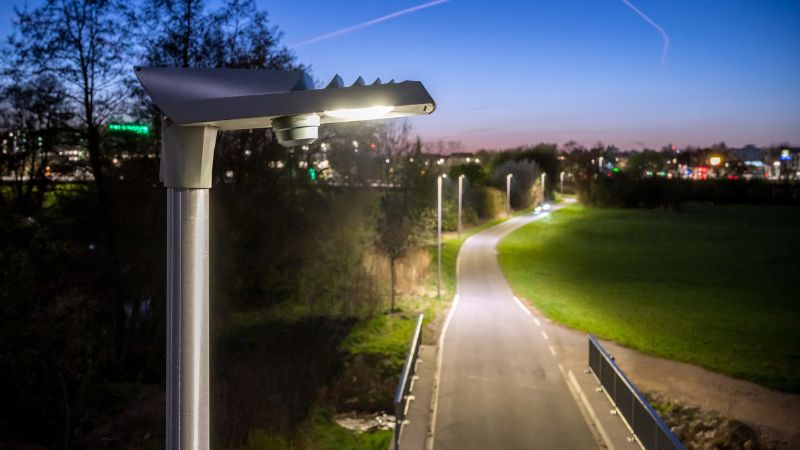
The positive impact of natural daylight is now well understood. Studies suggest that it can improve mental function and memory by up to 25%. Connected indoor lighting can also have a positive impact on mood, alertness and sleep patterns.
Circadian lighting—light that works with the human circadian rhythm—can be used in hospitals to simulate the rhythms of night and day to help patients sleep. In hotels, it can be used to help long-haul guests overcome jet lag.
Swissôtel The Stamford in Singapore uses Signify’s Interact system to improve the guest experience. A bio-adaptive “Wake up” setting means that guests can rise and shine to a pre-scheduled, simulated dawn light.
“The essence of our brand is for our guests to spend quality time while travelling. This means we ensure our guests keep their natural vitality while on the road and feel energized after a good night’s rest at any of our Swissôtels globally,” says Lilian Roten, vice president, brand management for Swissôtel.
Signify’s NatureConnect lighting can recreate the ebb and flow of natural daylight for hospital patients, encouraging better sleep and a quicker recovery from treatment.
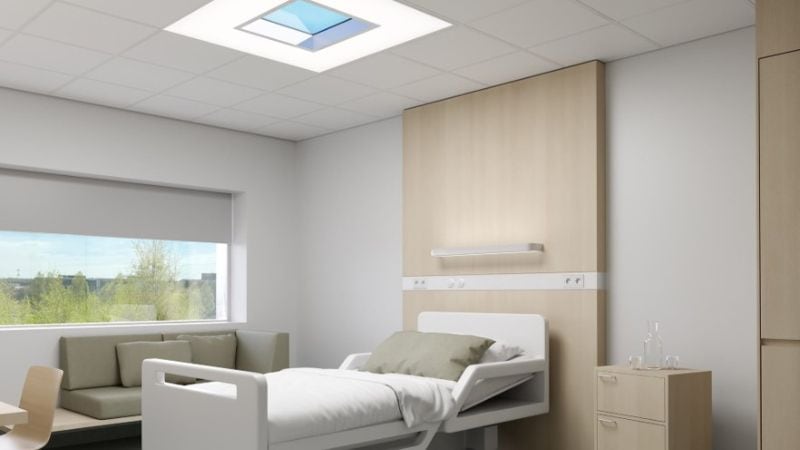
Controlled, adaptable lighting can also make a significant positive impact in education, improving educators’ and students’ quality of life, and enhancing the learning environment.
The University Medical Center Hamburg-Eppendorf studied the effects of a dynamic LED lighting system on students over the course of a year. The system offered teachers four lighting options—Energy, Calm, Standard and Concentration—and the positive effects were dramatic. Students’ reading speed increased by 35%, errors decreased by 45% and hyperactivity decreased by 76%.
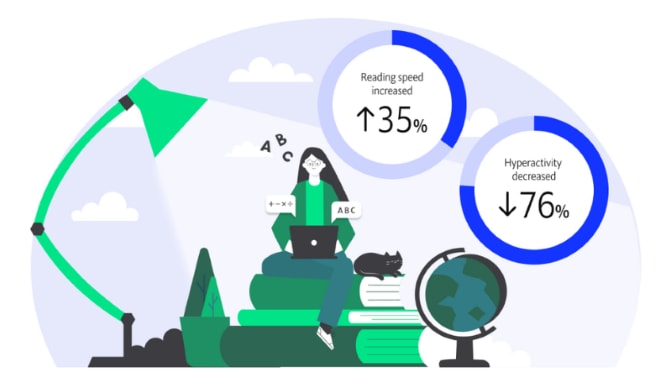
Eindhoven University of Technology (TU/e) deployed Signify’s Interact system as part of the renovation of its main building, Atlas.5 More than 4,000 luminaires were fitted with motion and daylight sensors, which adjust to occupancy and natural light levels, and can also be controlled using a mobile app. The connected lighting system has helped TU/e to cut CO₂ emissions by 80% and energy bills by 60%.
The building is also home to TU/e’s Intelligent Lighting Institute, which researches the effects of human-centric lighting. Interact’s sophisticated sensors and individual controls make it the perfect tool for studying the potential of indoor lighting to positively affect mood and well-being.
The healthcare industry—from hospitals to care homes—can also benefit from connectivity that takes illumination beyond lighting. In care homes, enhanced lighting in areas with steps reduces the risk of residents falling. In operating theatres, it can reduce the number of medical errors. Circadian lighting can improve quality of life for night workers, while also supporting sleep patterns.
The Vredenbergh care home in Breda in the Netherlands introduced NatureConnect from Signify to create a healthier environment for its nursing staff. While the residents’ apartments at Vredenbergh are bathed in natural light, the nurses’ workstation, set in the middle of the building, was windowless, dark and gloomy.
The LED luminaires within NatureConnect bring far more light in to the workstation, and its Daylight, Skylight and Lightscape settings use overhead lights to create a canopy of cloudless sky and mimic the ebb and flow of natural daylight.
Eline van Raak
Facility manager at Vredenbergh
Connected and advanced LED lighting is an essential tool in reducing the energy consumption of buildings and cities. Lighting accounts for 17% of the total electricity consumption in schools in the US, and 16% in hospitals. LED lighting can reduce a building’s lighting-related energy consumption by up to 50%, and by up to 80% when using advanced lighting control systems, which dim and brighten lights in response to occupancy and daylight.
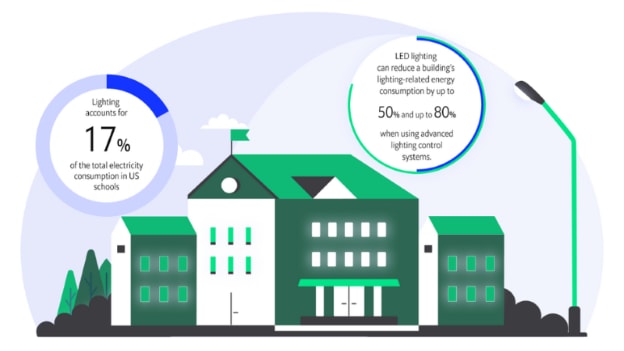
When assessing the benefits of switching to connected lighting, it is also important to measure its social impact. Open spaces become safer and more attractive. Indoor spaces, meanwhile, become more pleasant for workers in offices and industry, as well as hotel and restaurant guests, and there are also positive impacts on well-being and performance in education and healthcare.
Connected lighting therefore goes beyond lighting to offer a smart investment that delivers critical environmental, social and economic returns. And Signify’s Green Switch program has been designed to help cities to create innovative and future-proofed lighting solutions that can improve, and keep improving, the lives of its citizens.
Signify Global Media relations - Professional Lighting
Claire Phillips
Tel: +44 7956 489081
Email: claire.phillips@signify.com
Signify (Euronext: LIGHT) is the world leader in lighting for professionals, consumers and the Internet of Things. Our Philips products, Interact systems and data-enabled services, deliver business value and transform life in homes, buildings and public spaces. In 2023, we had sales of EUR 6.7 billion, approximately 32,000 employees and a presence in over 70 countries. We unlock the extraordinary potential of light for brighter lives and a better world. We have been in the Dow Jones Sustainability World Index since our IPO for seven consecutive years and have achieved the EcoVadis Platinum rating for four consecutive years, placing Signify in the top one percent of companies assessed. News from Signify can be found in the Newsroom, on X, LinkedIn and Instagram. Information for investors is located on the Investor Relations page.
